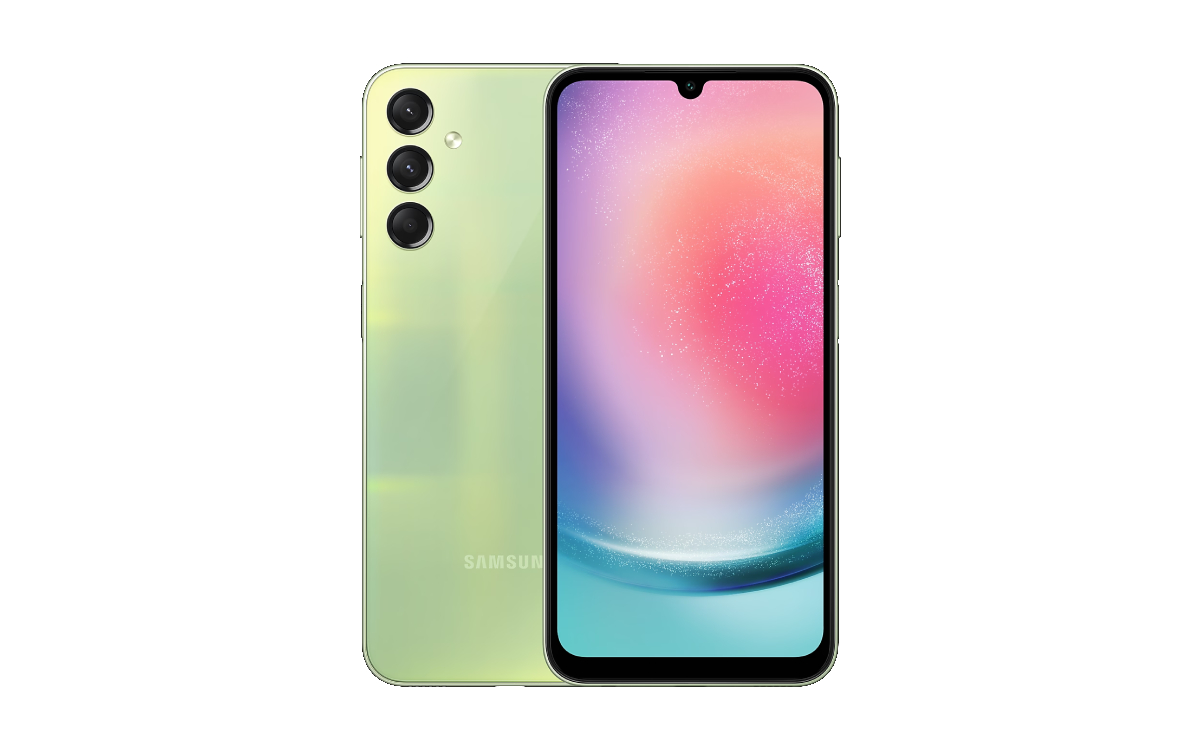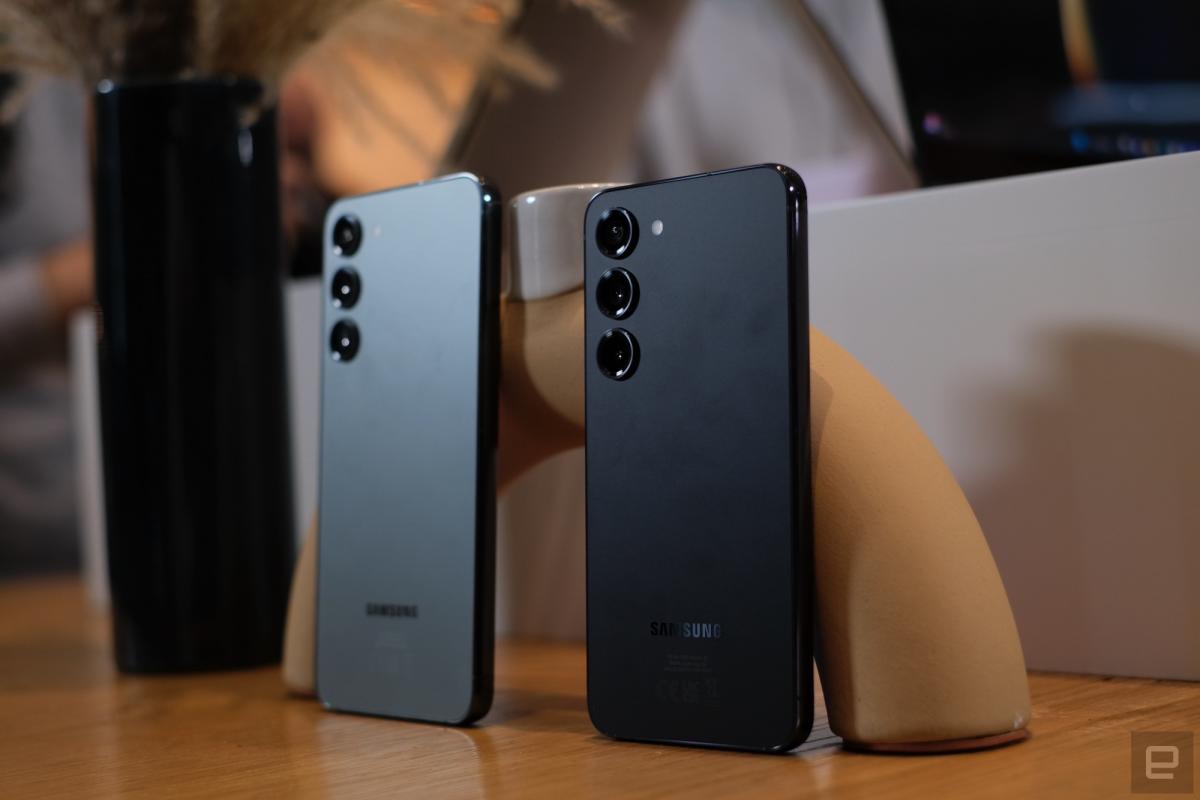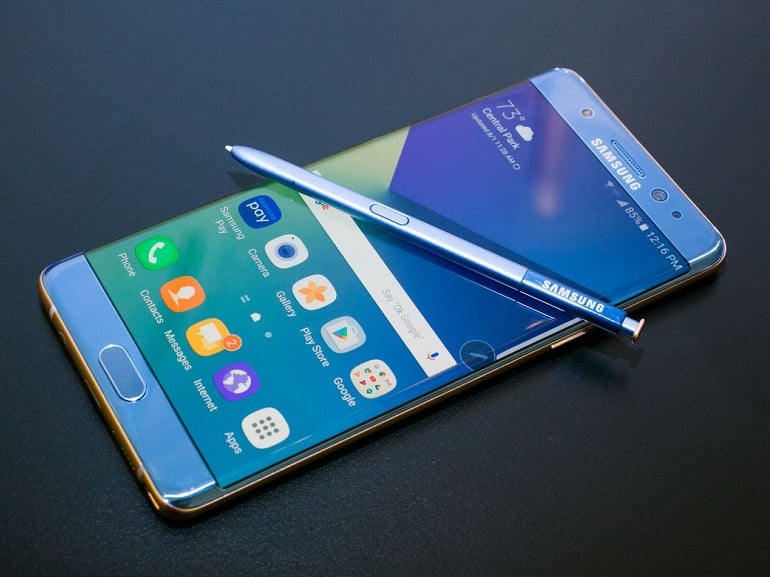samsung galaxy note 7 takes center stage as a pivotal device in the smartphone industry, showcasing remarkable innovation while also becoming infamous for its challenges. Launched in August 2016, it was touted for its stunning design, impressive specifications, and ambitious features like the S Pen and iris scanner. However, the excitement surrounding its release soon turned to concern as battery issues emerged, overshadowing its technological advancements and leading to a massive recall.
The story of the Samsung Galaxy Note 7 goes beyond its technical prowess; it reflects both the heights of innovation and the depths of consumer trust challenges within the tech industry. With its sleek design and powerful performance, it aimed to set a new standard for smartphones but ultimately faced scrutiny that would alter the course of future devices.
Overview of Samsung Galaxy Note 7

The Samsung Galaxy Note 7 was launched in August 2016 as a part of Samsung’s premium Note series. This device was highly anticipated due to its blend of high-end specifications, innovative features, and the notable design elements that had become synonymous with the Note family. Despite its unfortunate fate, the Galaxy Note 7 is remembered for its forward-thinking technology and ambitious design.
The development of the Galaxy Note 7 followed the success of its predecessors, the Note 5 and Note 4, with a focus on enhancing user experience through hardware improvements and software optimizations. It was powered by either the Qualcomm Snapdragon 820 or Samsung’s own Exynos 8890 processor, depending on the region. The device featured a 5.7-inch Super AMOLED display with a resolution of 1440 x 2560 pixels, offering vibrant colors and deep blacks that made it a pleasure for multimedia consumption and productivity tasks. The standout feature was the S Pen, which was enhanced with new functionalities like translation, magnification, and screen-off memo capabilities.
Key Specifications and Features
The Samsung Galaxy Note 7 came packed with an impressive array of specifications that made it a powerful contender in the smartphone market at the time. Below are the key technical specifications of the device:
- Display: 5.7-inch Super AMOLED, 1440 x 2560 pixels (518 ppi)
- Processor: Qualcomm Snapdragon 820 / Exynos 8890
- RAM: 4 GB
- Storage: 64 GB internal storage, expandable via microSD card up to 256 GB
- Camera: 12 MP rear camera with dual pixel autofocus and 5 MP front camera
- Battery: 3,500 mAh, fast charging and wireless charging support
- OS: Android 6.0 (Marshmallow) with Samsung’s TouchWiz UI
- Water and Dust Resistance: IP68 rating
These specifications ensured that the Galaxy Note 7 was not only powerful but also capable of handling demanding applications, multitasking, and gaming, all while delivering impressive camera performance.
Design Elements and User Interface, Samsung galaxy note 7
Samsung’s design philosophy for the Galaxy Note 7 combined elegance with functionality, giving it a premium feel. The device featured a glass and metal build, with Gorilla Glass 5 on both the front and back, which enhanced durability while maintaining a sleek appearance. The curved edges provided a modern aesthetic and improved grip. The fingerprint scanner was seamlessly integrated into the home button, ensuring easy access and security.
The user interface was tailored to enhance productivity, with features such as split-screen multitasking and pop-up view for applications. The S Pen integration allowed users to take notes, annotate documents, and create sketches directly on the screen, further bridging the gap between smartphone and tablet functionality.
“The Galaxy Note 7 represented a significant evolution in the Note series, marrying cutting-edge technology with an intuitive user experience.”
The combination of high-end specifications, elegant design, and an innovative user interface made the Galaxy Note 7 a remarkable device, despite its ultimately short-lived presence in the market.
Issues and Controversies Surrounding the Device
The Samsung Galaxy Note 7, initially heralded as a revolutionary device in the smartphone market, quickly became embroiled in controversy due to significant battery-related incidents. These issues not only raised safety concerns but also severely impacted consumer trust and Samsung’s brand reputation.
The primary controversy surrounding the Galaxy Note 7 involved multiple reports of devices catching fire or exploding, which were traced back to manufacturing defects in the lithium-ion batteries. The incidents began to surface shortly after the phone’s release in August 2016, leading to widespread media coverage and public concern. According to reports, over 90 incidents were documented, prompting a swift reaction from Samsung, which was determined to address the crisis effectively.
Samsung’s Response to the Battery Incidents
In response to the alarming situation, Samsung implemented a comprehensive recall strategy. The following steps were taken to manage the safety concerns and restore consumer confidence:
- Initial Recall: On September 2, 2016, Samsung announced its first recall of approximately 2.5 million devices globally. Customers were urged to return their Note 7s for a replacement or a refund.
- Battery Replacement Program: Samsung replaced the faulty batteries with new ones that underwent rigorous testing to ensure safety. However, even after the replacements, reports of additional incidents persisted.
- Complete Recall and Discontinuation: By October 2016, Samsung made the difficult decision to halt production and sales of the Galaxy Note 7 completely, marking one of the largest recalls in consumer electronics history.
The repeated battery failures not only led to a massive recall but also significantly affected Samsung’s reputation. The brand, known for its innovation and quality, faced increased scrutiny. According to a study by the market research firm IHS Markit, the company’s reputation saw a marked decline as consumers began to associate the brand with safety hazards. Sales figures also reflected this downturn; the Note 7’s sales were forecasted to reach 12 million units but fell to around 5 million before its discontinuation.
“The Galaxy Note 7 debacle was a pivotal moment for Samsung, highlighting the potential repercussions of manufacturing flaws and the importance of swift corporate accountability.”
Overall, the issues surrounding the Galaxy Note 7 serve as a stark reminder of the challenges that can arise in the fast-paced tech industry, where consumer safety and brand integrity are paramount.
User Experience and Reviews

The user experience surrounding the Samsung Galaxy Note 7 has been a focal point of discussion since its release. While the device garnered significant praise for its innovative features and performance, it also faced critical backlash due to the well-publicized battery issues. This section aims to compile user testimonials, analyze performance across various use cases, and compare user satisfaction with other flagship smartphones from the same era.
User Testimonials and Experiences
User experiences with the Galaxy Note 7 range from enthusiastic praise to serious frustration. Many users highlighted the device’s stunning display and functionality, while others expressed disappointment due to safety concerns.
Positive testimonials often focus on:
-
“The screen is absolutely gorgeous, vivid colors and fluid motion make it a joy to use for media consumption.”
-
“The S Pen functionality is a game changer for productivity; I can jot down notes and ideas quickly.”
-
“Performance-wise, the Note 7 handles games and multitasking effortlessly without lag.”
Conversely, negative feedback frequently pointed out:
-
“The battery issue was a nightmare; I couldn’t trust my phone anymore.”
-
“After the recall, I felt anxious every time my phone heated up.”
-
“The device’s premium price didn’t feel justified after such a major flaw.”
Performance Analysis in Key Use Cases
In assessing the Galaxy Note 7’s performance, it’s crucial to analyze its capabilities in gaming, photography, and productivity, which are key areas of interest for users.
For gaming, the Note 7 excelled due to:
- Powerful hardware, including the Snapdragon 820 processor, providing smooth gameplay.
- A stunning Super AMOLED display, enhancing graphics and detail.
- Efficient cooling mechanisms, allowing extended gaming sessions without overheating.
In photography, the camera’s performance was highlighted as one of its standout features:
- A 12 MP rear camera with Dual Pixel technology, ensuring fast autofocus and excellent low-light performance.
- High-quality images with vibrant colors and impressive detail, often compared favorably against contemporaries.
- Intuitive camera software that simplified shooting modes, catering to both casual and professional users.
For productivity, the Note 7 was praised for:
- The S Pen’s features, which allowed for advanced note-taking and sketching capabilities.
- The integration of multitasking features, enabling users to run multiple apps simultaneously.
- Productivity tools such as Samsung DeX, which aimed to transform the phone into a desktop-like experience.
User Satisfaction Comparison
Comparing user satisfaction with the Galaxy Note 7 against other flagship smartphones of its time reveals distinct insights into consumer preferences.
When stacked against competitors like the iPhone 7 and Google Pixel, user sentiment highlighted:
- Many users found the Galaxy Note 7’s features appealing, particularly in the stylus and display quality, which were not available on the iPhone 7.
- However, the battery issues led to a drop in user confidence, affecting overall satisfaction ratings compared to competitors, which maintained their reputations without major controversies.
- Users appreciated the Note 7’s versatility in productivity, although some preferred the simpler ecosystem of the iPhone for everyday use.
In conclusion, while the Samsung Galaxy Note 7 was highly regarded for its innovative features and performance, the shadow of its battery controversy significantly impacted user experiences and satisfaction levels. This duality reflects the complexity of modern smartphone ownership, where cutting-edge technology often comes with its own set of challenges.
Legacy and Influence on Future Devices

The Samsung Galaxy Note 7, despite its troubled history, left an indelible mark on the smartphone landscape. The challenges faced by the device prompted significant shifts in design philosophy and safety regulations within the industry, shaping the evolution of subsequent models. The aftermath of the Note 7 incident not only influenced Samsung but also set new standards for mobile devices across the board.
Issues of battery safety and device reliability highlighted crucial areas for improvement in design and manufacturing processes. As a direct response, Samsung implemented more rigorous quality control measures and adopted a new multi-layer safety approach that included extensive testing protocols. This shift aimed to prevent similar issues in future devices, which ultimately led to the design of the Galaxy S8 and subsequent models that focused heavily on safety and user experience.
Impact on Design and Safety Regulations
The Galaxy Note 7’s explosive failures underscored the importance of battery safety and led to an industry-wide reassessment of quality control. In the wake of these events, several significant changes were implemented:
- Increased Battery Testing Procedures: Manufacturers began adopting more stringent battery testing standards, ensuring that each unit underwent multiple safety checks before reaching consumers.
- Implementation of a Battery Advisory Group: The creation of advisory boards aimed at overseeing battery safety and technology developments became common practice among smartphone makers.
- Regulatory Changes: Industry bodies such as the Consumer Product Safety Commission (CPSC) in the U.S. revised guidelines for battery safety, promoting transparency and accountability in manufacturing processes.
The Note 7 incident sparked discussions within regulatory frameworks, influencing authorities to mandate stricter compliance from manufacturers regarding battery safety. This has had a far-reaching impact, enhancing consumer confidence in mobile technology.
Evolution of the Galaxy Note Series Post-Note 7
Following the Note 7 crisis, the Galaxy Note series underwent a notable transformation. Each new iteration not only sought to restore consumer trust but also aimed to innovate beyond previous limitations. The timeline below Artikels the significant developments in the Galaxy Note series since the Note 7:
| Year | Model | Key Innovations |
|---|---|---|
| 2016 | Galaxy Note 7 | First device with a curved display and iris scanner. |
| 2017 | Galaxy Note 8 | Introduced dual-camera system and improved battery safety measures. |
| 2018 | Galaxy Note 9 | Upgraded S Pen with Bluetooth functionality and enhanced battery capacity. |
| 2019 | Galaxy Note 10 | First Note model to feature a hole-punch display and advanced video recording capabilities. |
| 2020 | Galaxy Note 20 | Enhanced productivity features with Microsoft integration and improved camera technology. |
The legacy of the Note 7 serves as a crucial reminder of the importance of safety and reliability in technology. As a result, Samsung’s subsequent devices have not only improved in terms of performance and features but have also excelled in meeting higher safety standards, reflecting the lessons learned from the Note 7 experience.
FAQ Summary: Samsung Galaxy Note 7
What were the key features of the samsung galaxy note 7?
The samsung galaxy note 7 featured a 5.7-inch Quad HD display, the S Pen stylus, an iris scanner, and a dual-edge curved design, along with a 12MP camera and water resistance.
Why did the samsung galaxy note 7 get recalled?
The recall was initiated due to battery defects that caused some devices to overheat and catch fire, leading to safety concerns for users.
What impact did the samsung galaxy note 7 have on future smartphones?
The issues faced by the Note 7 prompted Samsung to enhance its battery safety protocols and influenced the design choices of subsequent models in the Galaxy series.
How did consumers react to the samsung galaxy note 7?
Consumer reactions were mixed, with many praising its performance and features, while others expressed disappointment and concern over the safety issues that led to the recall.
What lessons were learned from the samsung galaxy note 7 incident?
The incident highlighted the importance of rigorous testing and quality assurance in product development, leading to stricter safety regulations in the industry.
The Samsung Galaxy F series has quickly gained popularity for its impressive features at an affordable price. It showcases a powerful camera, long-lasting battery, and vibrant display, making it an attractive option for budget-conscious consumers. As more users seek value without compromising quality, the Galaxy F stands out in a competitive smartphone market.
When discussing smartphone performance, the chip iPhone plays a crucial role in delivering a seamless user experience. Apple’s proprietary chips are known for their efficiency and speed, allowing iPhones to handle demanding applications and multitasking with ease. This cutting-edge technology continues to set the standard for mobile processing power, further enhancing the appeal of iPhones in today’s market.